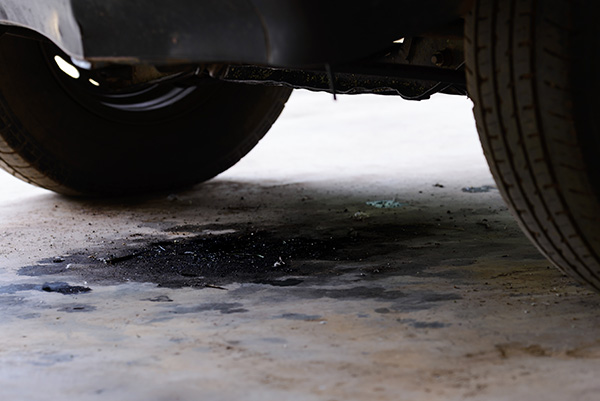
Oil keeps your engine cool, clean, and protected from wear. When it starts to leak, the damage is rarely instant, but it builds with every mile. Small spots on the driveway often turn into bigger problems that affect belts, sensors, and even the catalytic converter. Catching an oil leak early saves money and protects engine life, especially if you rely on your car for daily commuting or family trips.
Why Oil Leaks Happen
Modern engines use a mix of rubber seals, formed gaskets, and precise metal surfaces to keep oil in and dirt out. Heat cycles harden rubber over time. Pressure changes push on weak points. Old, oxidized oil can leave varnish that prevents seals from sliding smoothly.
Common triggers include overdue oil changes, short-trip driving that never burns off moisture, and small crankcase ventilation problems that raise internal pressure. Once a leak begins, oil spreads and attracts grit, which accelerates wear around the area.
Small Leaks Create Bigger Repair Bills
A few drops may not feel urgent, but the side effects add up. Oil that reaches a serpentine belt can cause slip, squeal, and premature belt failure. If it soaks engine mounts, the rubber can soften and collapse, leading to vibration and thumps when shifting into gear. Oil on hot exhaust makes smoke and odors that enter the cabin.
Long term, low oil level raises engine temperatures and speeds up wear on bearings, camshafts, and timing components. The longer a leak runs, the more likely nearby parts will need replacement along with the original gasket or seal.
Common Places Oil Escapes
Every engine has patterns, but several spots are frequent offenders. Valve cover gaskets often seep down the side of the engine, especially near the rear bank on V engines. Oil filter housings and cooler seals can drip onto the block and subframe. Front crankshaft seals and timing covers leak at the pulley end, sometimes flinging oil in a thin band inside the hood. Rear main seals leave a wet bellhousing and spots where the transmission meets the engine.
Oil pan gaskets and drain plug washers can weep at the lowest point, leaving the classic drip on the driveway. A clogged or stuck PCV system increases crankcase pressure and turns small seeps into active leaks.
How To Spot A Leak Early
Park on a clean surface and look for fresh drops after an overnight sit. Note color and smell. Engine oil is usually amber to dark brown with a slick feel. If the underside looks wet, shine a flashlight up the engine and trace the highest clean-to-wet transition; the top edge of the stain is near the source. Watch the oil level at each fuel stop. A sudden need to add half a quart between visits is a clue.
If smoke appears briefly after startup, oil may be seeping onto hot parts and burning off. Pay attention to new belt noise, rubber odors, or a faint haze from the vents after stopping.
What A Proper Inspection Includes
A reliable diagnosis starts with cleaning the area so fresh oil trails are easy to see. Technicians then add a small amount of UV dye to the oil and run the engine at different speeds and loads. With the car on a lift, a UV lamp reveals the source clearly, whether it is a valve cover corner, a filter housing seal, or a crank seal behind a pulley. The PCV system is checked for flow, and the engine is examined for coolant or fuel contamination that thins oil and encourages leaks.
If multiple gaskets are seeping, a priority list is made, starting with leaks that reach belts or the exhaust.
Temporary Measures Versus Permanent Fixes
Top-offs keep the engine safe in the short term, but they are not a cure. Stop-leak additives can swell seals slightly, yet they also alter oil chemistry and may affect variable valve timing components. They are best avoided on modern engines. The right solution is to replace the failed gasket or seal, torque hardware to spec, and verify the repair with a clean recheck after a road test.
If a PCV fault or cooling issue helped cause the leak, addressing that root cause prevents a repeat.
Simple Habits That Prevent Leaks
Regular oil changes with the correct grade and approval slow seal aging. Replace the drain plug washer at each service if your vehicle uses one. Ask for a quick look around the valve covers, filter housing, and front cover during routine visits. Fix small coolant leaks promptly, since coolant contamination speeds gasket breakdown.
If you notice increased moisture in the oil during short-trip seasons, take an occasional longer drive to burn off condensation.
Protect Your Engine With Snider Auto Care In Americus And Leesburg, GA
If you see fresh spots on the driveway, smell oil, or watch the level drop between fill-ups, our technicians can pinpoint the source and repair it the right way. We clean and dye-test the engine, verify PCV function, replace failed seals and gaskets, and confirm the fix with a road test and recheck.
Schedule a visit with Snider Auto Care in Americus or Leesburg, GA, and keep your engine clean, quiet, and protected.